Page Not Found
Page not found. Your pixels are in another canvas.
Page not found. Your pixels are in another canvas.
About Me
This opinion editorial is about increasing the age to buy nicotine products in Virginia to 21 years old. The article discusses Virginia’s history of regulating nicotine use, health consequences of nicotine addiction, and the culture of vape use in high schools.
Recommended citation: Habib D. Stars, stripes and nicotine addiction. The Roanoke Times. Published September 25, 2019. https://roanoke.com/opinion/commentary/habib-stars-stripes-and-nicotine-addiction/article_26b9a122-2d2f-5d1a-9b23-f0a258e4567c.html
This article is about the prevalent restrictions and suffering of people living in fragile Middle Eastern countries during the COVID-19 pandemic.
Recommended citation: Habib D. COVID-19 in the Middle East. Asia & The Pacific Policy Society. Published August 14, 2020. https://www.policyforum.net/covid-19-in-the-middle-east
This article is about the process of comparing COVID-19 policy databases and leading an international team of students to conduct research on health-centered and restrictive policies in strong and fragile Middle Eastern countries.
Recommended citation: Habib D, Elmore N. Researching the COVID-19 pandemic: New vistas and data limitations. Middle East Law and Governance Blog. Published May 2, 2022. https://blog.brill.com/view/post/guest-post/podcast/researching-the-covid-19-pandemic.xml
JAMIA Open,
This paper explains how to implement a hash algorithm to create anonymous but deterministic identifiers, allowing for the provision of incentives without revealing identities of the participants. This easy-to-use method has implications for more efficient and ethical research as well as expedited IRB approval if identities would have otherwise not been anonymous to allow for incentive distribution.
*equally contributing first authors
Recommended citation: Habib D*, Jha N*. AIM against survey fraud. JAMIA Open. 2021;4(4):ooab099. doi:10.1093/jamiaopen/ooab099
Middle East Law and Governance,
This paper examines how state fragility affects COVID-19 policy implementation in the Middle East. Using data from the CoronaNet Government Response Database, policies from the four strongest and six most fragile Middle Eastern countries were categorized and analyzed. Findings from the Oxford Government Response Policy Tracker and COVID-19 World Symptom Survey show that fragile states implement more restrictive policies, have lower government stringency, and lower compliance. The study highlights sectors needing humanitarian aid and questions whether restrictions in fragile states are driven by covert political agendas or a lack of political and economic power.
Recommended citation: Habib D, Elmore N, Gulas S, Ruhde N, Mathew D, Parente N. Dyadic analysis of fragile Middle Eastern states and humanitarian implications of restrictive COVID-19 policies. Middle East Law Gov. 2022;14(1):26-61. doi:10.1163/18763375-14010008
Disability and Health Journal,
This study analyzed the accessibility of COVID-19 information and registration websites from 56 U.S. states and territories for people with visual disabilities. Using the WAVE Web Accessibility Evaluation Tool, the study found significant accessibility issues, such as insufficient contrast and unlabeled buttons, with median error scores of 259 for information pages and 146 for registration pages. These findings emphasize the need to improve website accessibility to ensure equitable pandemic resources for the disability community.
*equally contributing first authors
Recommended citation: Jo G*, Habib D*, Varadaraj V, Smith J, Epstein S, Zhu J, Yenokyan G, Ayers K, Swenor BK. COVID-19 vaccine website accessibility dashboard. Disabil Health J. 2022;15(3):101325. doi:10.1016/j.dhjo.2022.101325
Proceedings of the Eighth Workshop on Computational Linguistics and Clinical Psychology,
This paper explores similar language between people posting on Reddit about nonsuicidal self-injury and substance use disorders, namely recovery and support. We found that while people who self-injure conceptualize their condition as an addiction, they experience different comorbidites than people with substance use disorders.
Recommended citation: Giorgi S, Himelein-Wachowiak MK, Habib D, Ungar L, Curtis B. Nonsuicidal self-injury and substance use disorders: A shared language of addiction. Proceedings of the Eighth Workshop on Computational Linguistics and Clinical Psychology. 2022:177-183. doi:10.18653/v1/2022.clpsych-1.15
American Journal of Drug and Alcohol Abuse,
This paper traces the dehumanization of people who use drugs throughout the War on Drugs and its consequences in the present day. We call for humanizing strategies toward treating people with substance use disorders and a shift away from dehumanizing portrayals in the media.
Recommended citation: Habib DRS, Giorgi S, Curtis B. Role of the media in promoting the dehumanization of people who use drugs. Am J Drug Alcohol Abuse. 2023;49(4):371-380. doi:10.1080/00952990.2023.2180383
Journal of Medical Internet Research,
This scoping review provides a comprehensive overview of studies that analyzed Twitter users’ tweets to identify and understand physical and mental health conditions as well as remotely monitor the leading causes of mortality related to emerging disease epidemics, chronic diseases, and risk behaviors. From the 38 articles meeting inclusion criteria, we concluded that Twitter constitutes a timely data source to improve the early identification of potential health threats and help identify subtle signals in language for understanding physical and mental health conditions.
Recommended citation: Lane J, Habib D, Curtis B. Linguistic Methodologies to Surveil the Leading Causes of Mortality: Scoping Review of Twitter for Public Health Data. J Med Internet Res. 2023;25:e39484. doi:10.2196/39484
The Milbank Quarterly,
This paper provides a framework for improving health and civic engagement in tandem. Social determinants of health are also drivers of lower civic engagement. Additionally, poor health is often associated with less civic engagement and vice versa. Along with addressing social determinants, primary care should be bolstered to not only improve health but also increase civic engagement indirectly via improved health status and directly via primary care voter registration programs, for example.
*equally contributing first authors
Recommended citation: Habib DRS*, Klein LM*, Perrin EM, Perrin AJ, Johnson SB. The role of primary care in advancing civic engagement and health equity: A conceptual framework. Milbank Q. 2023;101(3):731-767. doi:10.1111/1468-0009.12661
Frontiers in Public Health,
This paper quantifies the dehumanization of people who use substances (PWUS) across three decades using a large corpus of over 3 million news articles. The results show that levels of dehumanization remain high and while marijuana has become less dehumanized over time, attitudes toward other substances such as heroin and cocaine remain stable. This work highlights the importance of a holistic view of substance use that places all substances within the context of addiction as a disease, prioritizes the humanization of PWUS, and centers around harm reduction.
Recommended citation: Giorgi S, Habib DRS, Bellew D, Sherman G, Curtis B. A linguistic analysis of dehumanization toward substance use across three decades of news articles. Front Public Health. 2023;11:1275975. doi:10.3389/fpubh.2023.1275975
The Laryngoscope,
This retrospective chart review investigates the impact on oncologic outcomes of oral cavity cancer being present upon re-resection. Among 1873 patients who underwent curative-intent surgery for oral cavity cancer, 10% had initial positive margins and underwent re-resection during surgery. Notably, 29% of re-resections revealed additional carcinoma, carcinoma in situ, or severe dysplasia, and 31% of patients with initial positive margins retained final positive margins, with half showing positive margins at a different anatomical site than the initial positive margin. Worse overall survival was associated with re-resection involving cancer and final positive margin status. Age, T4 disease, and recurrent oral cavity cancer surgery emerged as independent predictors of overall survival. Since fewer than a third of oral cavity re-resections contain further malignancy, our results suggest that surgeons might have difficulty relocating the site of the initial positive margin.
Recommended citation: Prasad K, Sharma R, Habib D, Sinard R, Mannion K, Rohde S, Langerman A, Netterville J, Rosenthal E, Lewis J, Topf MC. How often is cancer present in oral cavity re-resections after initial positive margins? Laryngoscope. 2024;134(2)717-724. doi:10.1002/lary.30959
American Journal of Health Promotion,
This paper identifies factors associated with parents’ trust in messengers of COVID-19 guidance and shows that trust in doctors is associated with caregiver and child vaccination. Between January and June 2022, we surveyed 567 caregivers of elementary and middle school students in Maryland about trust in 9 messengers, demographics, and COVID-19 vaccination status. The most trusted messengers were doctors, family members, and schools. Parent characteristics were associated with trust, and trust was linked to vaccination. Awareness of variability in trusted health messengers can optimize willingness to listen to public health guidance.
Recommended citation: Klein LM, Habib DRS, Edwards LV, Hager ER, Berry AA, Connor KA, Calderon G, Liu Y, Johnson SB. Parents’ trust in COVID-19 messengers and implications for vaccination. Am J Health Promot. 2024;38(3):364-374. doi:10.1177/08901171231204480
Journal of Clinical Neuroscience,
In this study of 140 patients with essential tremor undergoing evaluation for deep brain stimulation (DBS) surgery, we showed that tremor scores were associated with language function. Two metrics for scoring tremor severity yielded unique results. High Fahn-Tolosa-Marin (FTM) scores also correlated with increased severity in depression and visuospatial functioning. However, Washington Heights Inwood Genetic Study of Essential Tremor (WHIGET) scores showed no association with non-motor symptoms. To improve the quality of life of ET patients, future work should investigate clinically relevant differences in the unique motor symptoms captured by each metric and elucidate mechanisms underlying the association between motor impairment, cognitive impairment, and mood symptoms.
Recommended citation: Bishay AE, Habib DRS, Lyons AT, Hughes NC, Summers JE, Dhima K, Bick SK. The association between motor and non-motor symptoms in essential tremor patients being evaluated for deep brain stimulation surgery. J Clin Neurosci. 2024;122:59-65. doi:10.1016/j.jocn.2024.03.006
Otolaryngology-Head and Neck Surgery,
This study looked at patients who underwent microvascular free flap (FF) reconstruction for head and neck surgery and compared outcomes before and after a change in protocol from immediate postoperative monitoring in the ICU versus the general ward. We found that shifting care to the general ward decreased ICU length of stay significantly without increasing complications or compromising FF success rates. While there was a rise in rapid response team calls post-protocol, the overall findings suggest that managing these patients on the general ward is safe and could help conserve ICU resources.
Recommended citation: Stevens MN, Prasad K, Sharma RK, Gallant JN, Habib DRS, Langerman A, Mannion K, Rosenthal E, Topf MC, Rohde SL. Comparative outcomes for microvascular free flap monitoring outside the intensive care unit. Otolaryngol Head Neck Surg. 2024;171(2):381-386. doi:10.1002/ohn.780
Journal of Surgical Oncology,
Despite the increasing use of immunotherapy in treating various cancer types, there is still limited understanding of its impact on surgical complications. This study investigates the impact of neoadjuvant immunotherapy on surgical outcomes in rectal cancer patients. Using the National Cancer Database, researchers performed a retrospective cohort study with a 1:1 propensity match to compare patients receiving standard chemoradiation alone versus those also receiving immunotherapy. The matched analysis of 125 patients found no significant differences in hospital length of stay, unplanned 30-day readmission, or 30-day mortality, although those receiving immunotherapy had a longer time from diagnosis to surgery. The findings suggest that neoadjuvant immunotherapy does not increase surgical complications, aiding clinicians in treatment planning.
*equally contributing first authors
Recommended citation: Shou M*, Habib DRS*, Idrees K, Hawkins A, Ford M, Lee H, Khan B, Khan A. Impact of neoadjuvant immunotherapy on postoperative complications after surgery for rectal cancer. J Surg Onc. doi:10.1002/jso.27694
Proceedings of the Eighteenth International AAAI Conference on Web and Social Media,
This paper examines stigma toward people who use substances (PWUS). The introduction highlights the prevalence of substance use disorders (SUDs), barriers to treatment-seeking, and the limited attention to stigma toward PWUS compared to other forms of hate speech. We recruited Amazon Mechanical Turk (MTurk) workers to label a dataset of about 5,000 public Reddit posts for stigma, and we automatically detected stigmatizing content to investigate the relationship between personal experience and stigma perception. This crowd-sourced annotation task shows that annotators who use substances or know someone in SUD treatment are more likely to identify stigmatizing content. Integrating person-level demographics with comment-level language in a supervised machine learning framework called Jury Learning achieves a classification accuracy of 0.69, a 17% improvement over using language alone. We release our stigma-annotated dataset, demonstrate the influence of lived experience on identifying stigmatizing content, discover linguistic markers of stigma based on perspectives of individuals with substance use experience, and highlight the importance of understanding the social context of machine learning tasks.
Recommended citation: Giorgi S, Bellew D, Habib DRS, Sedoc J, Smitterberg C, Devoto A, Himelein-Wachowiak MK, Curtis B. Lived experience matters: Automatic detection of stigma on social media toward people who use substances. Proceedings of the International AAAI Conference on Web and Social Media. 2024;18(1):474-487. doi:10.1609/icwsm.v18i1.31328
Substance Use and Misuse,
This study investigates adolescent vaping through a social influence model, focusing on gender differences within a high school network. An online survey collected data on demographics, vaping status, and friendships, and custom scripts were used to analyze the social connections. Results showed that students who vape had closer-knit friend groups, with females exhibiting greater homophily in vaping ties than males. Future large-scale studies should determine if trends can be generalized across student bodies, while more granular studies should tease apart motivations underlying these differences to individualize cessation strategies.
Recommended citation: Habib DRS, Kady A. Applying social network theory to vaping in high school: Implications for person-centered intervention. Subst Use Misuse. 2024:1-5. doi:10.1080/10826084.2024.2359714
Annals of Surgical Oncology,
This study assessed the impact of neoadjuvant immunotherapy on surgical complication risk across six cancer types: oral cavity, rectal, colon, anal, esophageal, and non-small cell lung cancers. Among 953,612 patients who underwent non-palliative oncologic surgery, only 0.5% received neoadjuvant immunotherapy. We found no significant association between neoadjuvant immunotherapy and the composite outcome of major postoperative morbidity (i.e., extended hospital length of stay, unplanned 30-day readmission, or 30-day mortality). Our findings suggest that immunotherapy is safe before surgery across six types of cancer. As neoadjuvant immunotherapy becomes more prevalent and as more surgeons are considering operating on patients who have recently completed or are currently undergoing immunotherapy, understanding its impact on surgical outcomes is crucial for optimizing patient care.
*equally contributing first authors
Recommended citation: Habib DRS*, Shou M*, Phillips RH, Pickens A, Hawkins A, Idrees K, Khan A. Association of neoadjuvant immunotherapy with postoperative major morbidity after oncologic surgery. Ann Surg Onc. 2024;31(13):8508-8513. doi:10.1245/s10434-024-16284-8
Annals of Otology, Rhinology & Laryngology,
Branchial cleft anomalies are rare congenital neck masses that sometimes form sinus tracts, requiring surgery for removal. This study reviewed 118 pediatric surgeries without using methylene blue dye, a technique often employed to trace sinus tracts during the procedure. The findings showed no recurrences of the sinus tracts and minimal complications, suggesting that dye may not be necessary for successful outcomes. These results could reduce unnecessary costs and simplify procedures for patients and surgeons.
Recommended citation: Habib DRS, Jamal NH, Patel K, Wootten CT, Belcher RH. Perioperative outcomes of branchial cleft sinus tract excision in pediatric patients without the use of intraoperative dye. Ann Otol Rhinol Laryngol. 2024;134(4):245-248. doi:10.1177/00034894241303021
Journal of Neurosurgery,
This study examined the effects of ventral intermediate nucleus (VIM) deep brain stimulation (DBS) on nonmotor symptoms in patients with essential tremor (ET). Following DBS, we found a small but statistically significant improvement in depression scores, while anxiety remained unchanged. Cognitive testing showed slight declines in language and memory, but attention, executive function, and visuospatial function were unaffected. In sum, preoperative mood and cognitive scores were linked to post-DBS changes, highlighting the importance of individualized patient counseling when considering DBS for ET.
Recommended citation: Bishay AE, Lyons AT, Habib DRS, Hughes NC, Long I, Zargari M, Qian H, Paulo D, Summers JE, Li R, Bishay S, Terry DP, Dawant BM, Ball TJ, Konrad PE, Englot DJ, Dhima K, Bick SK. Effect of deep brain stimulation on nonmotor symptoms in essential tremor. J Neurosurg. 2025. doi:10.3171/2024.11.JNS241990
Annals of Surgery,
This study highlights a concerning gap in consent forms regarding exams under anesthesia performed by medical trainees. Out of 110 hospitals surveyed, only 4% mentioned exams under anesthesia in their consent forms, raising questions about patient awareness and consent in sensitive examinations. The findings stress the need for explicit consent to protect patient autonomy and trust, as many patients feel traumatized when they learn about unconsented exams. We call for standardized, comprehensible language in consent forms to uphold transparency and respect for patient rights.
*equally contributing first authors
Recommended citation: Habib DRS*, Lin G*, Langerman A. Gaps in informed consent for intimate exams under anesthesia. Ann Surg. 2025;281(5):723-724. doi:10.1097/SLA.0000000000006568
Surgical Endoscopy,
Anastomotic leaks complicate up to 10% of the 300,000 colorectal surgeries performed annually in the U.S., with tension being a key but subjectively assessed risk factor. This study evaluates the feasibility of an objective method to measure mechanical tension in ex vivo porcine colons using a machine learning algorithm integrated with the da Vinci Research Kit (dVRK). The algorithm estimated forces applied by robotic arms with high accuracy (up to 88%) and strong correlation (Spearman’s Correlation > 0.80) with ground-truth sensor data. This novel approach represents the first robotic measurement of tissue tension and has the potential to improve surgical outcomes by reducing anastomotic leaks.
*equally contributing first authors
Recommended citation: Khan A*, Yang H*, Habib DRS, Ali D, Wu JY. Development of a machine learning-based tension measurement method in robotic surgery. Surg Endosc. 2025;39(5):3422-3428. doi:10.1007/s00464-025-11658-9
American Journal of Otolaryngology,
Head and neck cancer (HNC) patients face some of the highest financial burdens of all cancer types due to complex, long-term treatments. However, this study of over 2,000 HNC clinical trials found that only 3.3% included cost as an outcome, and nearly all have yet to report results. This is lower than in many other cancers, despite rising healthcare costs and the importance of cost-effective care. These findings highlight a need for more consistent inclusion of cost data in trials to better guide treatment decisions and support patients facing financial hardship.
Recommended citation: Collins RS, Lee IA, Habib DRS, Garner DC, Johnson DB, Patel PN, Topf MC. Cost evaluation in head and neck cancer clinical trials: Implications for high-value care. Am J Otolaryngol. 2025;46(5):104655. doi:10.1016/j.amjoto.2025.104655
OTO Open,
This systematic review analyzed 67 studies encompassing 7,331 pediatric patients to assess hypocalcemia rates following total thyroidectomy (TT). Pooled incidence rates were 25.2% for transient, 7.4% for permanent, and 32.1% for any hypocalcemia. Risk was significantly higher in patients with malignancy, Graves' disease, or those undergoing lymph node dissection. These findings highlight hypocalcemia as a common and clinically important complication in pediatric TT.
Recommended citation: Aweeda M, Fassler C, Habib DRS, Miller AB, Ortega C, Prasad K, Chen CL, Lopez M, Duffus SH, Belcher RH. Risk factors and rates for hypocalcemia after pediatric thyroidectomy: A systematic review and meta-analysis. OTO Open. 2025;9(2):e70130. doi:10.1002/oto2.70130
Journal of Gastrointestinal Surgery,
Anastomotic leak is a serious complication after colon surgery, but its risk may vary depending on why the surgery is performed. In this large national study of nearly 84,000 patients, we found that people undergoing surgery for inflammatory bowel disease or diverticulitis were more likely to experience a leak compared to those with colon cancer or polyps. Inflammatory bowel disease posed the highest risk and often required additional, non-surgical procedures to manage the leak. These findings can help guide surgical decision-making and better inform patients about their risks.
Recommended citation: Sun K, Wang CC, Shou M, Habib D, Rogers JL, Sethurathnam J, Ali D, Khan A. Not all cuts heal the same: Elevated anastomotic leak rates after elective colectomy for IBD and diverticulitis. J Gastrointest Surg. 2025. doi:10.1016/j.gassur.2025.102138
Nature Materials,
Cancer cells often migrate through tight spaces during metastasis, but how they do this is not fully understood. This study shows that anillin and Ect2, two nuclear proteins critical in cell division, are released into the cytoplasm during confined migration and help the cell move by activating myosin II. This process is intensified when the cell’s nucleus ruptures, releasing even more of these proteins. Together, anillin and Ect2 enable cancer cells to adapt to their environment and become more invasive.
Recommended citation: Tran A, Wisniewski E, Mistriotis P, Stoletov K, Parlani M, Amitrano A, Ifemembi B, Lee SJ, Bera K, Zhang Y, Tuntithavornwat S, Afthinos A, Kiepas A, Agarwal B, Nath S, Jamieson J, Zuo Y, Habib D, Wu PH, Martin S, Gerecht S, Gu L, Lewis J, Kalab P, Friedl P, Konstantopoulos K. Cytoplasmic anillin and Ect2 promote RhoA/myosin II-dependent confined migration and invasion. Nat Mater. 2025;24(9):1476-1488 doi:10.1038/s41563-025-02269-9
Journal of Surgical Oncology,
This study examined overtreatment in early-stage (cT1-2N0M0) colorectal cancer (CRC) patients who underwent definitive resection without pathologic upstaging. Using National Cancer Database (NCDB) data from 2010–2020, we identified risk factors for overtreatment and analyzed its impact on overall survival (OS). Younger age, Black race, and pT2 tumors were linked to overtreatment in colon cancer, while pT2 stage, poor differentiation, and high-risk histology were associated with rectal cancer overtreatment. Overtreatment correlated with worse OS in colon cancer but not in rectal cancer.
Recommended citation: Habib DRS, Shou M, Rogers JL, Sun K, Wang C, Khan A. Less is more: Risk factors and survival outcomes of overtreatment for early-stage colorectal cancer. J Surg Oncol. 2025. doi:10.1002/jso.70028
Surgical Endoscopy,
Intraoperative recordings may improve surgical quality and education, but patients are not always informed about their use. This study analyzed consent forms from 104 U.S. hospitals and found that 70 contained text about procedural recording. Of these, nearly all mentioned recording modality and purpose but 54% and 14% explained patient safeguards and rights, respectively. The language was also too complex, written at a college reading level instead of the recommended middle school level. Our findings highlight the need for clearer, more complete consent materials to better inform patients about intraoperative recordings.
Recommended citation: Habib DRS, Prasad K, Aweeda M, Lin G, Bishay AE, Gao Y, Liu D, Langerman A. Patient rights and consent form language about intraoperative audiovisual recording. Surg Endosc. 2025. doi:10.1007/s00464-025-12010-x
Annals of Surgery,
Overlapping surgery remains controversial. Recent guidelines from the Senate Finance Committee and the American College of Surgeons call for transparency in informed consent, but it is unclear how many institutions have adopted these recommendations. This study assessed informed consent documents from 104 institutions, finding that only 29% included language about overlapping surgery or surgeon absence. Few forms explicitly detailed who would perform the procedure if the surgeon was absent, and only 7% met all recommended criteria. These findings highlight a significant gap in transparency, indicating a need for improved informed consent practices regarding overlapping surgery.
Recommended citation: Mitchell MB, Lin G, Prasad K, Habib DRS, Langerman A. Overlapping surgery verbiage in informed consent documents. Ann Surg. 2025;282(2):254-257. doi:10.1097/SLA.0000000000006324
Journal of Clinical Ethics,
This study analyzed 4,127 hospital ethics consults to better understand real-world challenges in consent discussions. Consent-related consults (3.3%) more often involved adult and female patients and were typically lower in complexity than non-consent consults. Common issues included capacity, surrogate decision-making, and communication barriers, with capacity concerns significantly linked to surrogate decision-making issues. These findings highlight key areas to improve consent protocols and support ethical clinical care.
Recommended citation: Habib DRS, Naranjo C, Langerman AJ. Informed consent challenges: A mixed-methods study of hospital ethics consultations. J Clin Ethics. 2025;36(3):215-223. doi:10.1086/736146
OTO Open,
Despite the growing need for hearing technology, public interest in cochlear implants (CIs) remains low compared to hearing aids (HAs). Using Google Trends data from 2004–2024, we found that HA-related searches steadily increased, while CI searches remained relatively flat. Only a few events, like International CI Day or major policy changes, led to brief spikes in CI awareness. These findings suggest a need for more sustained efforts to raise public understanding of CIs.
Recommended citation: Habib DRS*, Bishay AE*, Langerman AJ, Tawfik KO. Public awareness of hearing aids and cochlear implants: A Google Trends analysis of media campaigns. OTO Open. 2025;9:e70160. doi:10.1002/oto2.70160
Annals of Otology, Rhinology & Laryngology,
Children who continue to have obstructive sleep apnea (OSA) after adenotonsillectomy (AT) often undergo drug-induced sleep endoscopy (DISE) to identify airway blockages and guide additional surgery. In this study of 122 children, 27 (22%) required more than one DISE-directed procedure. Most children had multiple areas of obstruction, especially at the epiglottis and adenoids during repeat procedures. Children with higher body mass index (BMI) tended to need repeat surgeries sooner and showed more complex obstruction patterns. These findings highlight the importance of early, personalized treatment planning—particularly for children who are younger, have higher BMI, or exhibit other medical conditions—and suggest that a single surgery may not fully resolve persistent OSA.
Recommended citation: Habib DRS, Patro A, Wu J, Davis S, Lipscomb B, Zhao S, Patel K, Wootten C, Whigham AS. Multiple drug-induced sleep endoscopy in pediatric obstructive sleep apnea: Obstruction patterns and outcomes. Ann Otol Rhinol Laryngol. 2025. doi:10.1177/00034894251381169
Journal of Medical Systems,
This study introduces a computational framework to structure and analyze eligibility criteria across three real-world clinical trial protocols, supporting more fine-grained AI-driven trial matching. Criteria were decomposed into individual variables and evaluated by data type, scope, and interdependency. Trials varied widely, containing 22–160 eligibility variables, with 4–22% dependent on other criteria. Reading grade levels ranged from sixth grade to college level, and complexity scores differed substantially. These findings highlight the need for standardized, computable approaches to improve transparency and scalability in AI-driven clinical trial recruitment.
Recommended citation: Habib DRS, Mahajan I, Evancha B, Micheel C, Fabbri D. Computational framework for structuring and analyzing clinical trial criteria for AI-guided fine-grained matching. J Med Sys. 2025;49(1):168. doi:10.1007/s10916-025-02303-y
American Journal of Otolaryngology,
In this longitudinal cohort of 461 children undergoing adenoidectomy, we found that revision surgery was associated with higher BMI, younger age at primary intervention, undergoing initial adenoidectomy rather than adenotonsillectomy, and various comorbidities, with differing time-dependent effects. A second procedure was required for 29.5% of children at a median of 29 months. These findings highlight the potential role of obesity-related inflammation in adenoid hypertrophy and support more personalized surgical planning for children at risk of adenoid regrowth.
Recommended citation: Arida-Moody L, Habib DRS, Neal EH, Whigham AS. Adenoid regrowth and obesity in a longitudinal pediatric cohort. Am J Otolaryngol. 2025. doi:10.1016/j.amjoto.2025.104764
American Journal of Otolaryngology,
In this retrospective cohort of 787 patients who underwent total laryngectomy, 26.9% developed postoperative dysphagia and 16.6% required esophageal dilation over a median 28.5-month follow-up. Prior radiation, adjuvant radiation, and tongue base resection were independently associated with dysphagia, while total pharyngectomy and pedicled reconstruction showed associations on univariable analysis. Only prior radiation predicted the need for dilation. These findings from a large cohort highlight key surgical and treatment-related risk factors and support targeted counseling for high-risk patients undergoing total laryngectomy.
Recommended citation: Swain B, Habib DRS, Jin W, Duvall P, Sinard RJ, Mannion K, Rohde SL, Langerman AJ, Rosenthal EL, Hicks MD, Topf MC. Risk factors for dysphagia following total laryngectomy. Am J Otolaryngol. 2025. doi:10.1016/j.amjoto.2025.104780
Published:
This poster highlighted signaling pathways that are activated in invasive breast cancer cells when nuclei are confined during migration in synthetic microfluidic devices – a finding that can be extrapolated to contricted passageways in the body such as pre-existing perineural spaces and bone cavities or channels created by macrophages and cancer-associated fibroblasts through ECM remodeling.
Recommended citation: Wisniewski E, Mistriotis P, Bera K, Zhang J, Nikolic M, Tuntithavornwat S, Law R, Zhao R, Habib D, Kalab P, Scarcelli G, Konstantopoulos K. Nuclear stiffening along with RhoGEF activity regulate RhoA/MyosinII-dependent contractility and cell migration phenotype in confinement. Poster presented at: Biomedical Engineering Society Annual Meeting; October 16, 2020; Virtual.

Published:
This presentation highlighted disparities in how Middle Eastern countries with different fragility scores handled the COVID-19 pandemic.
Recommended citation: Habib D, Elmore N, Gulas S, Ruhde N, Mathew D. The balance between health resource-oriented and restrictive COVID-19 policies in the Middle East. Oral presentation at: COVID-19 Public Health and Social Measures Research Outcome Conference; October 5, 2021; Virtual.

Published:
Although literature exists on the contagion effect of neighborhood blight, this study aims to take the field a step further by applying network analysis to the spread of vacant properties in Baltimore. Data on vacant properties from Open Baltimore were used to create a city-wide network of vacancies. The spread of neighborhood blight was measured in different sized communities, and network metrics were leveraged to select what vacancies upon rehabilitation would minimize the influence of neighborhood blight on future vacancies. Rehabilitation programs were found to be most effective when they had a larger number of possible rehabilitations, began earlier, and selected vacant properties that exhibited higher connectivity. Although currently available network metrics are not ideal for minimizing neighborhood blight, the use of outdegree shows promise to warrant future work on developing predictive algorithms that can estimate what properties would likely become vacant and hence whose predecessors should be targeted for rehabilitation. When supplemented with sociodemographic considerations and predictive algorithms, these findings can inform the optimal selection of vacancies to rehabilitate and thus most effectively mitigate the spread of neighborhood blight.
Recommended citation: Mitsinikos C, Habib D. A preliminary network analysis of blighted neighborhoods in Baltimore City. Oral presentation at: XLII International Social Networks Conference; July 14, 2022; Virtual.

Published:
Vaping in high schools has skyrocketed partly due to social factors. Peer influence on risky behavior is especially potent in adolescence and varies by gender. Smoking prevention programs focused on peer-group leaders have shown great promise, and a social influence model has proved effective in understanding adult smoking networks but has not been applied to adolescent vaping. This presentation applies the social influence model to vaping in a high school social network and helps inform school-based vaping prevention programs by examining the roles of social network centrality and gender on vaping behavior. An online survey was emailed to a high school’s student body asking for gender, age, grade level, vape status, self-reported peer influence status, and the names of three friends. Available at github.com/njha02/surveyAnalysis, custom Java and MATLAB scripts were used to read the survey data spreadsheet, create a directed graph, compute centrality measures, and perform student’s t-tests to compare centrality measures by gender and vape status. Of 192 students in the school, 102 students responded to the survey. Students who vape were in more tightly knit friend groups than students who do not vape (p<0.05). Compared to males who vape, females who vape had more social ties to other students who vape, exhibiting greater homophily (p<0.01). Compared to females who do not vape, females who vape were in more tightly knit friend groups (p<0.05) and had more ties to other students who vape (p<0.01). Applying social network theory can reveal previously untapped information to address vaping among a unique student body. In this case, an intervention targeting close-knit networks may prove more effective for females than males, but establishing trends across student bodies requires additional research to control for differences between schools (e.g., public/private or urban/rural). This study supports a general framework for assessing peer-influenced behavior.
Recommended citation: Habib D, Jha Na, Jha Ni, Curtis B. Applying social network theory to vaping in high school: Implications for school-based prevention programs. Oral presentation at: XLII International Social Networks Conference; July 15, 2022; Virtual.

Published:
This presentation showed how both individual coronavirus racial bias and county-level segregation were associated with pandemic distress while higher social status and social support had a protective effect.
Recommended citation: Habib D, Curtis B, Giorgi S, Turpin R. Segregation, coronavirus racial bias, and relationships with COVID-19 distress. Roundtable presentation at: American Public Health Association Annual Meeting; November 7, 2022; Boston, MA, USA.
Published:
This presentation leveraged big data to study dehumanizing language throughough the War on Drugs to today. We discovered trends that can help inform humanization strategies specific to each substance to which stereotypes are attributed.
Recommended citation: Habib D, Curtis B, Giorgi S, Bellew D. Trends in the dehumanization of people who use drugs in American news articles from 1986 to 2020. Roundtable presentation at: American Public Health Association Annual Meeting; November 9, 2022; Boston, MA, USA.

Published:
This poster discussed the frequency of carcinoma in oral cavity re-resections, oncologic outcomes of reresection after a positive margin, and difficulties surgeons may experience relocating the site of positive margin and resecting the remaining cancer.
Recommended citation: Prasad K, Sharma R, Habib D, Sinard R, Mannion K, Rohde S, Langerman A, Netterville J, Rosenthal E, Lewis JS, Topf MC. How often is cancer present in oral cavity re-resections after initial positive margins? Poster presented at: Triological Society Annual Meeting at COSM; May 4, 2023; Boston, MA, USA.
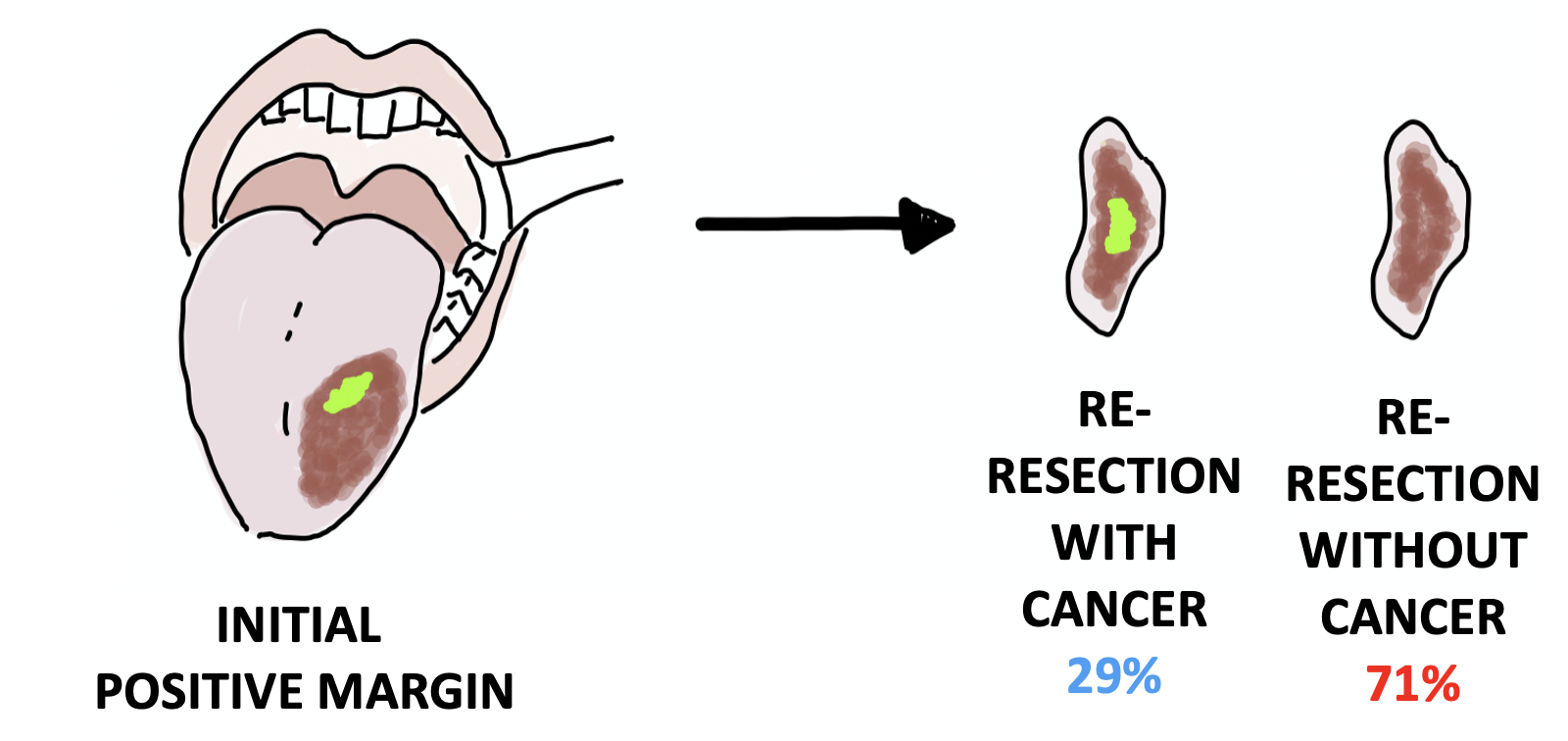
Published:
This presentation examined operative outcomes for patients transferred to a general ward following microvascular free flap reconstruction of the head and neck as compared to patients transferred to an intensive care unit (ICU). We found that there was no change in overall hospital length of stay (LOS), postoperative complications, readmission rates, or flap failure rates. We found a significant decrease in ICU LOS despite a significant increase in rapid responses. Transfer to a stepdown unit rather than an ICU would allow for a better quality hospital experience with improved sleep, decreased cost of care, and a higher number of available ICU beds for patients in greater need of critical care management with no significant increase in postoperative complications.
Recommended citation: Prasad K, Stevens MN, Sharma R, Habib D, West M, Langerman A, Mannion K, Rosenthal E, Topf MC, Rohde S. Flap to floor: Free flap comparative outcomes outside the ICU. Oral presentation at: American Academy of Otolaryngology-Head and Neck Surgery Annual Meeting; October 1, 2023; Nashville, TN, USA.

Published:
This poster discussed how to leverage big data from Reddit to identify and analyze substance use and support themes in popular subreddits related to substance use. This project captured fast-evolving substance use and harm-reduction patterns that can improve practitioners’ understanding of diverse substance use experiences. Additionally, our annotated list of subreddits will help researchers immediately identify relevant online communities to monitor emerging substances and routes of administration, identify benefits of digital recovery networks, analyze substance use and support language, and develop targeted secondary prevention strategies.
Recommended citation: Habib D, Giorgi S, Kady A, Demko Z, Curtis B. Novel substance use and support themes on Reddit: Lessons for researchers and practitioners. Poster presented at: American Public Health Association Annual Meeting; November 14, 2023; Atlanta, GA, USA.
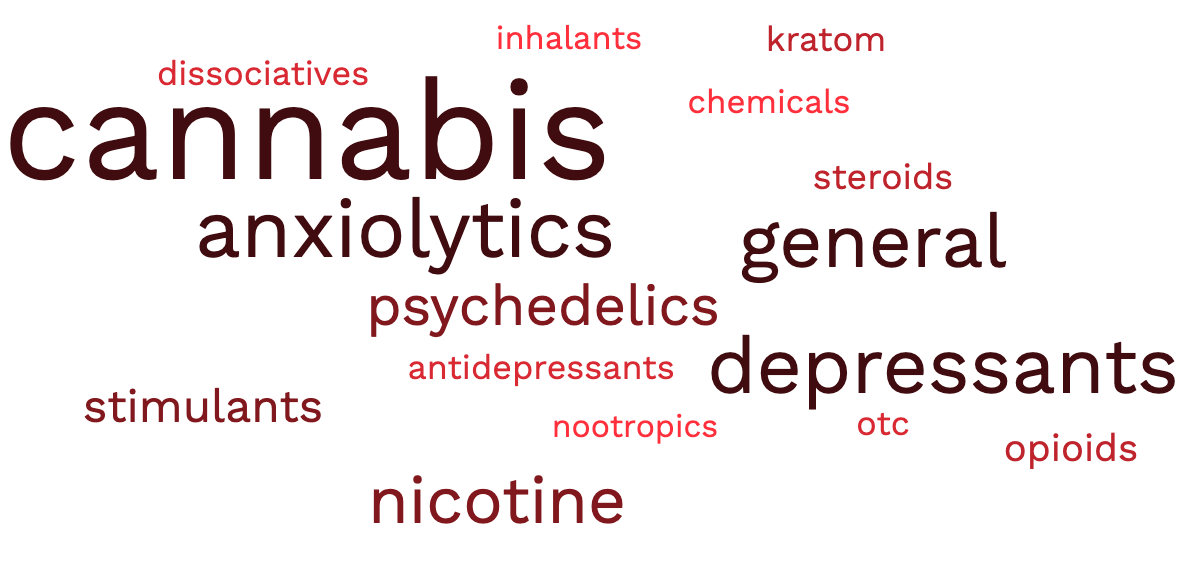
Published:
This poster discussed the applications, uses, and limitations of augmented reality (AR) in facial plastics and reconstructive surgery (FPRS). The most significant areas of application are within hard tissue reconstructions such as orthognathic surgery and trauma. AR has a significant applications in preoperative planning, intraoperative guidance, and postoperative assessment. The most common AR modality is head-mounted display, with computer-assisted design (CAD)/computer-assisted modification (CAM) and mobile app/monitor following closely behind. Soft tissue AR visualization, manual registration not keeping up with tissue rearrangement, and AR availability/unfamiliarity are challenges for AR applications in FPRS to break past its predominantly preclinical stage.
Recommended citation: Adegboye F, Si CD, Habib DRS, Stephan SJ, Patel PN, Yang SF. Augmented reality in facial plastic & reconstructive surgery: A systematic review. Poster presented at: American Academy of Facial Plastic and Reconstructive Surgery Annual Meeting at COSM; May 15, 2024; Chicago, IL, USA.
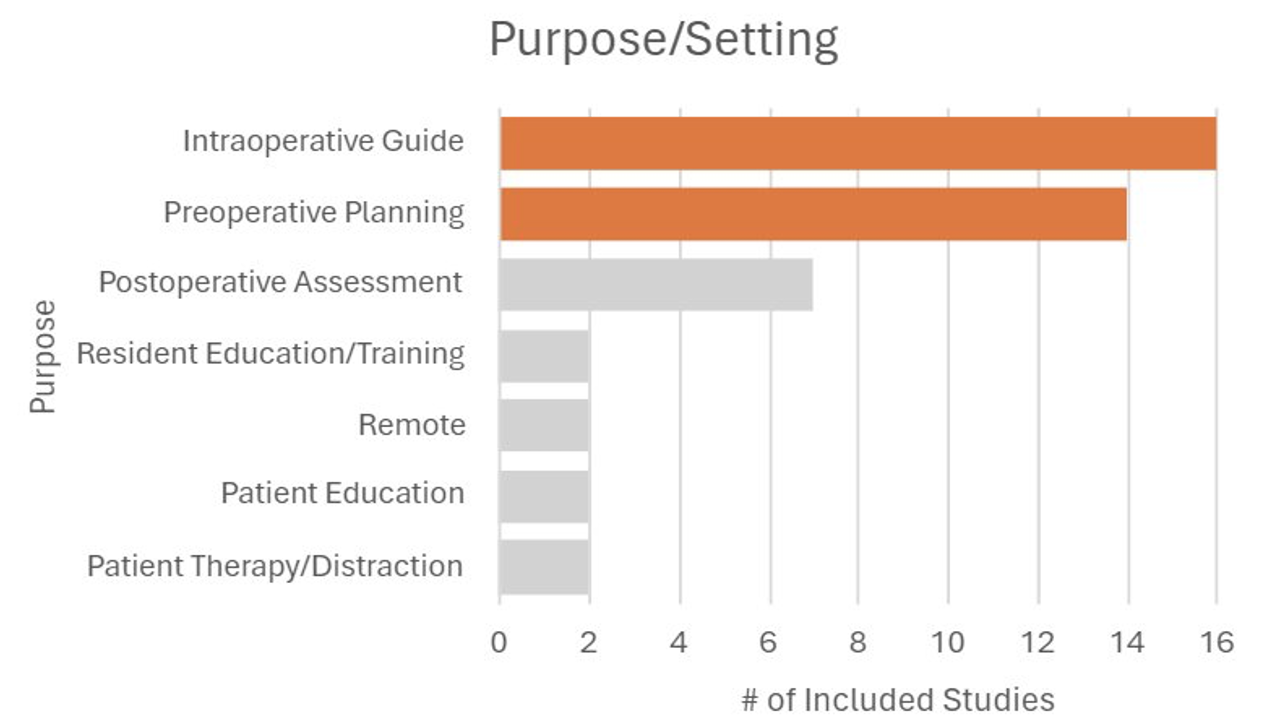
Published:
This study investigated if adherence to National Comprehensive Cancer Network (NCCN) guidelines would reduce disparities in oncologic outcomes between rectal cancer patients treated at high-volume and low-volume centers. Using 55,497 patients from the the National Cancer Database (NCDB), we found a survival benefit associated with adherence to NCCN guidelines and treatment at high-volume centers. While controlling for NCCN adherence alone does not remove the survival benefit at high-volume centers, this analysis shows that controlling for specific high-risk tumor and patient factors can mitigate this difference.
Recommended citation: Shroder M, Bai K, Habib DRS, Ye F, Hawkins A, Khan A. NCCN guideline adherence in rectal cancer and outcomes in low-volume vs. high-volume centers. Oral presentation at: American Society of Colon & Rectal Surgeons Annual Scientific Meeting; June 2, 2024; Baltimore, MD, USA.
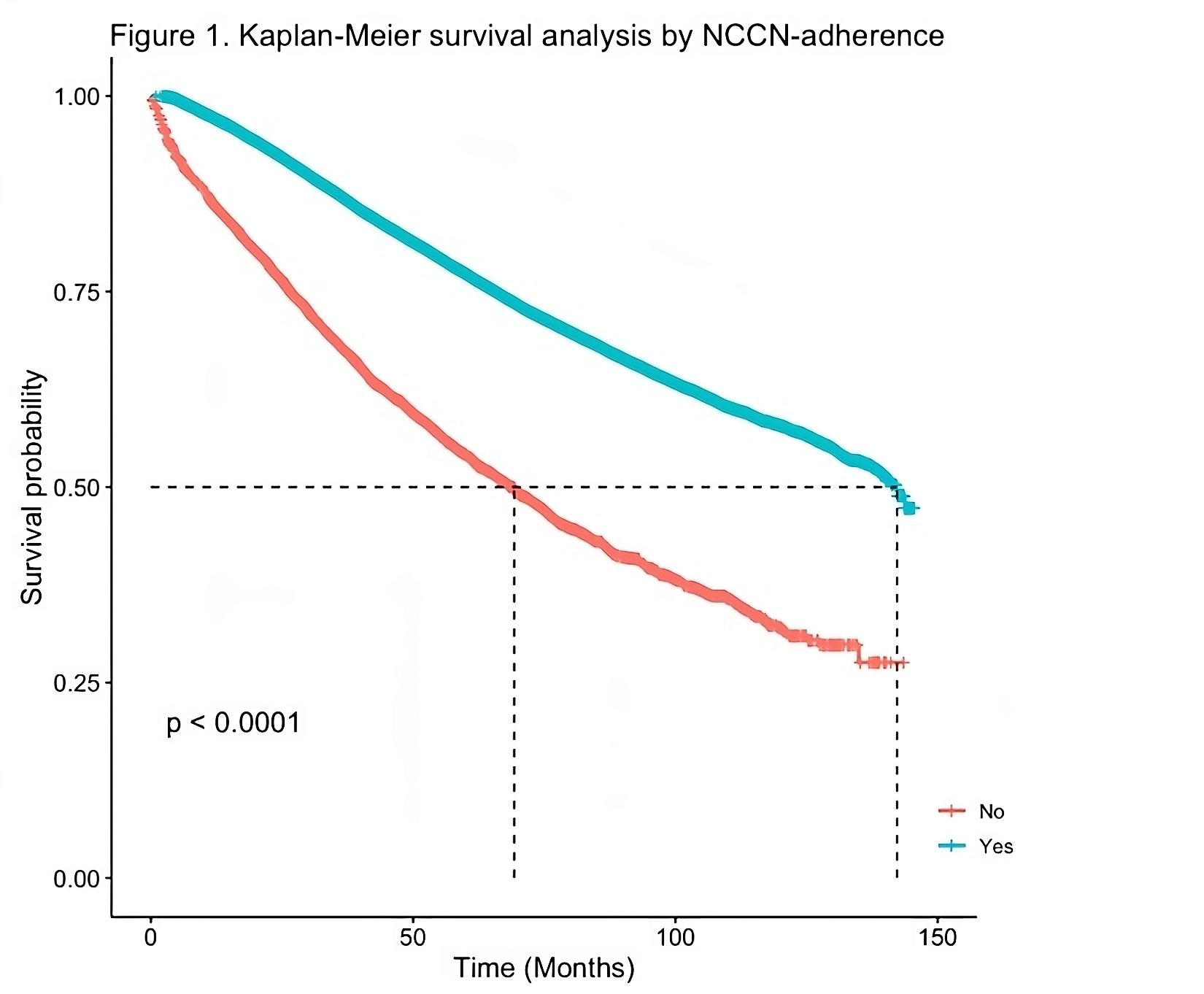
Published:
This poster discussed the impact of ventral intermediate nucleus (VIM) DBS on anxiety, depression, and cognition in essential tremor (ET) patients. Our results suggest that VIM DBS for ET is unlikely to cause adverse neuropsychological changes.
Recommended citation: Bishay T, Lyons AT, Habib DRS, Hughes NC, Qian H, Summers JE, Ball, TJ, Englot, DJ, Dhima K, Bick SK. Mood and cognitive effects of deep brain stimulation for essential tremor. Poster presented at: American Society for Stereotactic and Functional Neurosurgery Biennial Meeting; June 3, 2024; Nashville, TN, USA.
Published:
This study examines the impact of neoadjuvant immunotherapy on postoperative complications in various cancers. We analyzed data from over 950,000 cases involving curative-intent cancer surgery between 2010 and 2020, 0.5% of which were preceded by immunotherapy. Our findings indicate that neoadjuvant immunotherapy does not significantly increase postoperative major morbidity, suggesting surgery in the setting of neoadjuvant immunotherapy is safe.
Recommended citation: Shou M, Habib DRS, Idrees K, Khan A. Impact of neoadjuvant immunotherapy on postoperative complications after oncologic surgery. Oral presentation at: Society of Asian Academic Surgeons Annual Meeting; September 6, 2024; New Orleans, LA, USA.
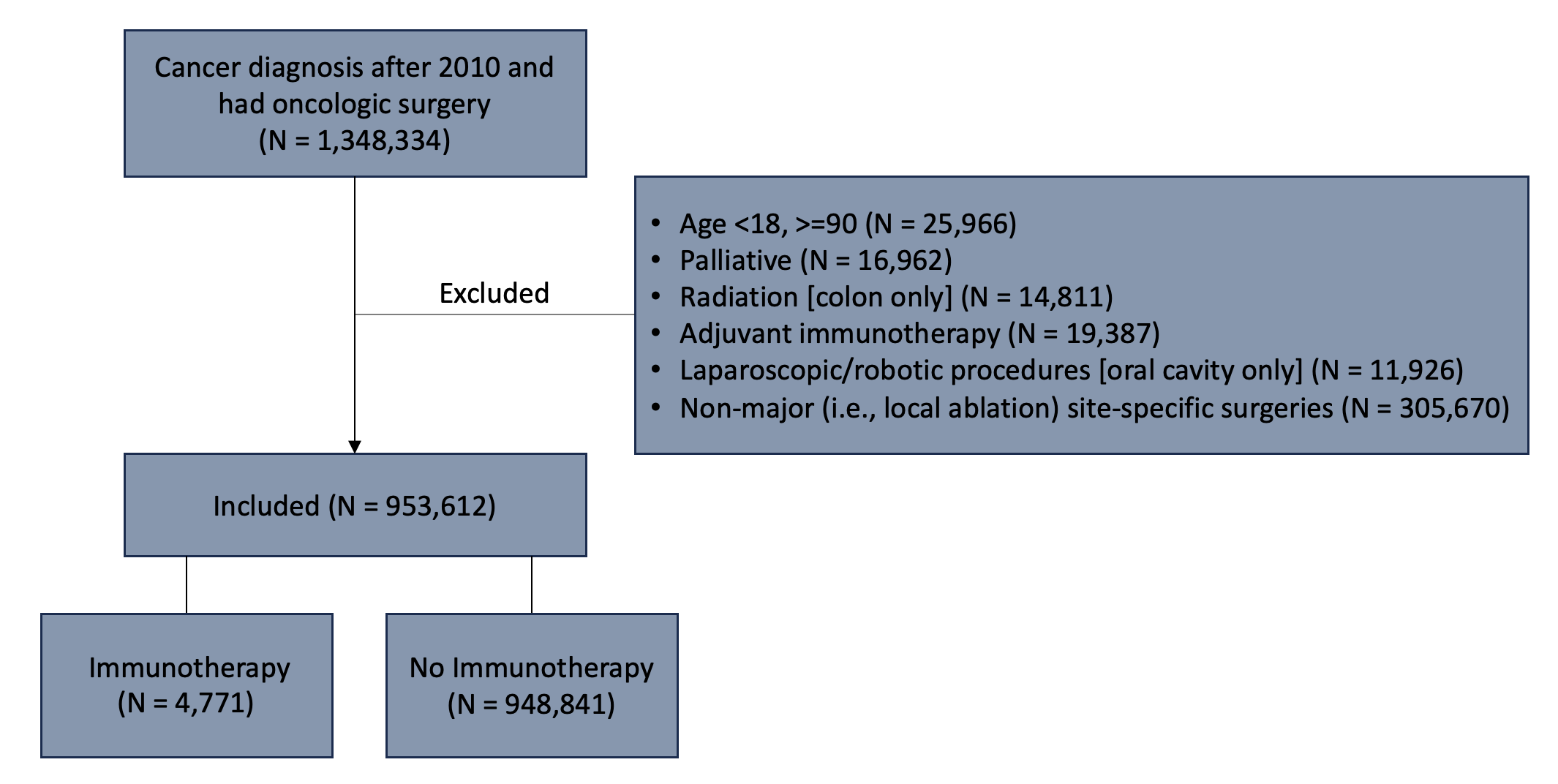
Published:
This poster addresses Emergency Department (ED) overcrowding and barriers to primary care physician (PCP) follow-up. Our interprofessional team identified patients with chronic conditions in the ED, conducted telephone surveys, provided primary care education, and linked patients with appropriate clinics. Of the 78 patients identified, 67 were reachable, and 18 completed the survey. Barriers included language, financial insecurity, and low medical literacy. Post-education, all patients correctly defined a PCP. In sum, many patients visit the ED due to barriers in accessing primary care and a lack of understanding of PCPs. Addressing these barriers, considering individual complexities, and expanding social work support are crucial to reducing ED overcrowding and improving health equity.
Recommended citation: Habib DRS, Labenberg A, Bilicki M. Facilitating primary care connections for emergency department discharge patients. Poster presented at: American Interprofessional Health Collaborative Nexus Summit; September 24, 2024; Virtual.
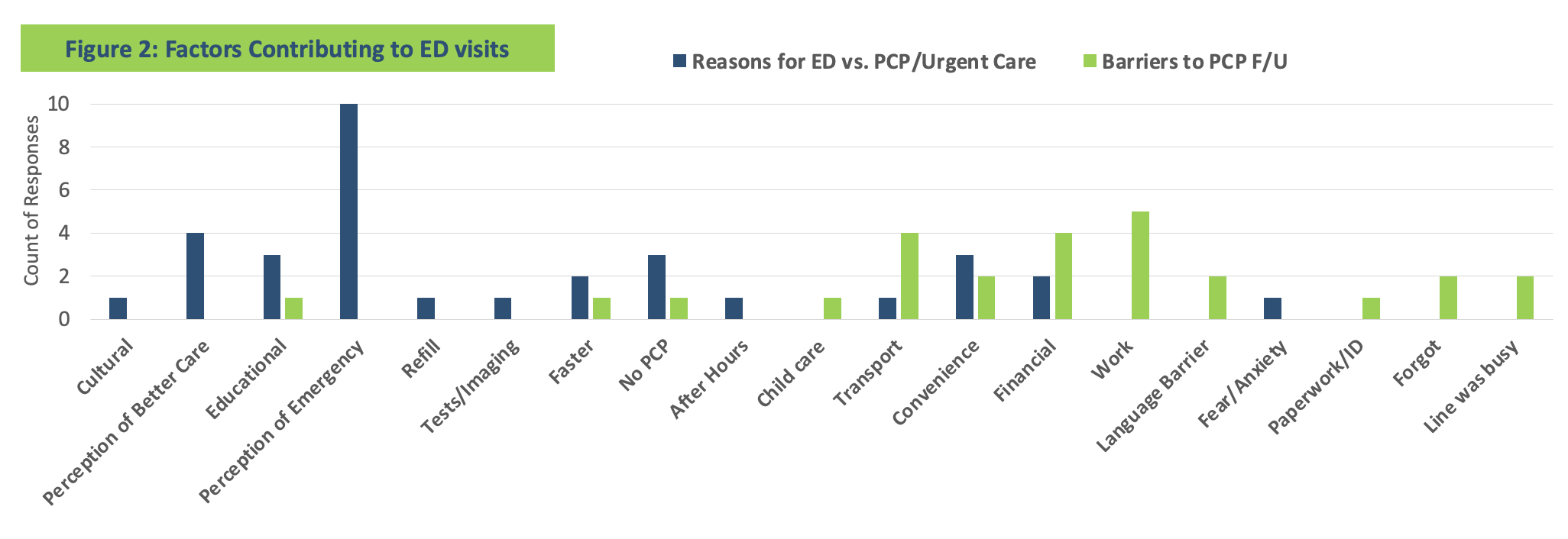
Published:
This poster assessed the impact of neoadjuvant immunotherapy on surgical outcomes across six cancer types using the National Cancer Database. Among 953,612 patients who underwent non-palliative oncologic surgery, only 0.5% received neoadjuvant immunotherapy. The analysis found no significant association between neoadjuvant immunotherapy and major postoperative complications in rectal, colon, anal, esophageal, lung (non-small cell), or oral cancers. The findings suggest that neoadjuvant immunotherapy does not increase the risk of postoperative complications.
Recommended citation: Habib DRS, Shou M, Idrees K, Khan A. Association of neoadjuvant immunotherapy with postoperative major morbidity after oncologic surgery. Poster presented at: Surgical Outcomes Club Annual Scientific Session; October 19, 2024; San Francisco, CA, USA.
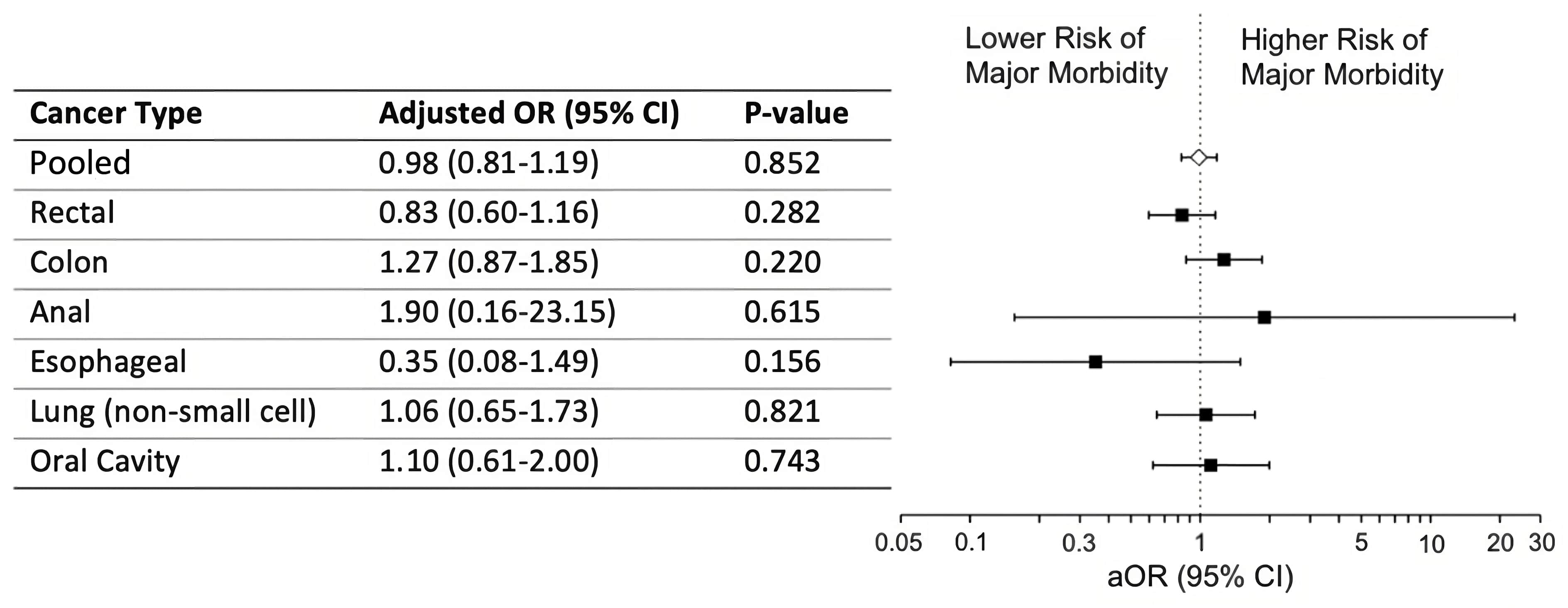
Published:
This oral presentation determined hypocalcemia rates and risk factors following total thyroid removal surgery in children. This work reviewed 67 studies with over 7,000 pediatric patients to determine how often transient (lasting under 6 months) and permanent (lasting over 6 months) hypocalcemia occur. Our results established that the pooled incidence rates were 32.1% for any hypocalcemia, 25.2% for transient hypocalcemia, and 7.4% for permanent hypocalcemia. We found thyroid cancer, Graves’ disease, and lymph node dissection to be risk factors for hypocalcemia following total thyroidectomy in children.
Recommended citation: Aweeda M, Fassler C, Habib DRS, Miller AB, Ortega C, Prasad K, Chen CL, Lopez M, Duffus SH, Belcher RH. Risk factors and rates for hypocalcemia after pediatric thyroidectomy: A systematic review and meta-analysis. Oral presentation at: Triological Society Combined Sections Meeting; January 23, 2025; Orlando, FL, USA.
Published:
This poster describes how patients discharged the same day as their mastectomy often encounter non-routine events (NREs), or deviations from expected medical care, that can significantly impact their experience. Patients reported NREs such as post-surgical discomfort, communication gaps, and challenges navigating the hospital. While most NREs were mild and preventable, they highlight the need for addressing uncertainties and establishing a reliable line of communication during the transition from hospital to home.
Recommended citation: Habib DRS, Sullivan LE, Salwei ME, Hewitt KC. Patient-reported non-routine events for same-day discharge after mastectomy. Poster presented at: Southwestern Surgical Congress Annual Meeting; April 6, 2025; Sonoma, CA, USA.
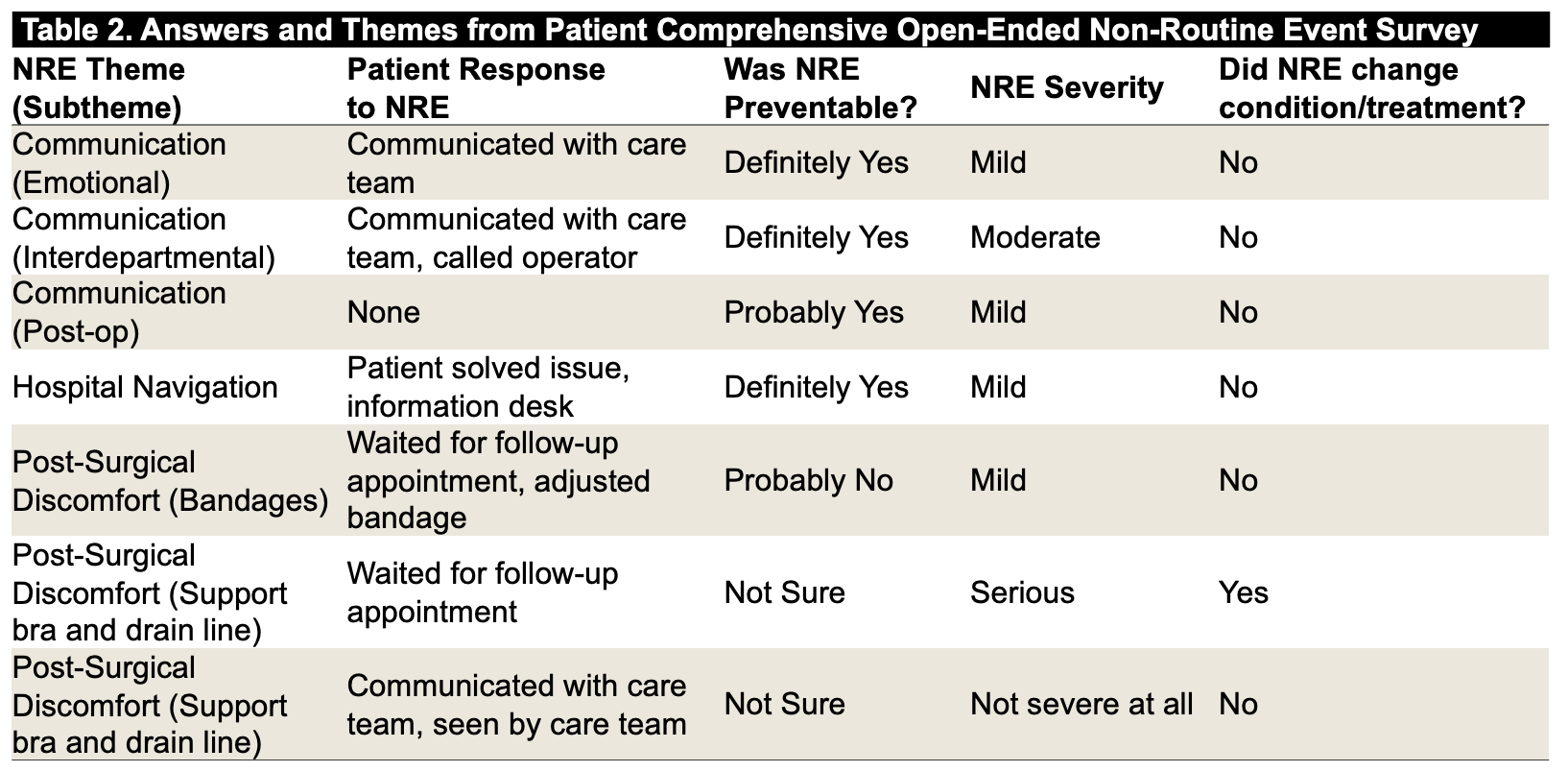
Published:
Deep brain stimulation (DBS) of the globus pallidus interna (GPi) is a treatment option for dystonia, but its effects on neuropsychological functions are not well understood. This poster examines whether DBS affects thinking and mood in patients with treatment-resistant dystonia by analyzing pre- and post-surgery neuropsychological test results. We found no significant changes in depression, anxiety, memory, attention, or other cognitive functions after surgery. These results suggest that GPi DBS is a safe treatment for treatment-resistant dystonia without negative effects on mental functions.
Recommended citation: Bishay AE, Tay A, Habib DRS, Qian H, Ball TJ, Englot DJ, Dhima K, Bick SK. Neuropsychological effects of GPi deep brain stimulation in medication resistant dystonia. Poster presented at: American Association of Neurological Surgeons Annual Meeting; April 25, 2025; Boston, MA, USA.
Published:
Pierre Robin Sequence (PRS) is a rare congenital condition often requiring surgical intervention to address feeding, airway, and speech challenges. Among 69 children with PRS, this poster found that nearly half underwent Mandibular Distraction Osteogenesis (MDO) with a success rate of 73%. Despite cleft palate repair, 38% of patients developed velopharyngeal insufficiency (VPI), and 25% required additional speech surgery. No significant association was found between cleft palate repair techniques and VPI or subsequent surgeries, highlighting the need for further research to optimize speech outcomes in this population.
Recommended citation: Patel K, Habib DRS, Phillips J. Speech outcomes and surgical care in Pierre Robin sequence. Poster at: American Cleft Palate-Craniofacial Association Annual Meeting; May 8, 2025; Palm Springs, CA, USA.
Published:
The benefit of adjuvant chemoradiotherapy (CRT) over radiotherapy (RT) alone for oral cavity squamous cell carcinoma (OCSCC) patients with positive margins but no extranodal extension (ENE) remains unclear after two landmark clinical trials (EORTC 229311 and RTOG 95-01) included only a small minority of patients with positives margins and no ENE. Among a matched cohort of National Cancer Database (NCDB) patients with positive margins but no ENE, this poster found no overall survival (OS) benefit for CRT compared to RT alone. These findings highlight the need for further research to refine adjuvant therapy recommendations for specific high-risk groups.
Recommended citation: Habib DRS, Li Y, Tassone P, Philips RH, Yalamanchi P, Holsinger FC, Topf MC. Adjuvant chemotherapy does not improve overall survival in positive surgical margin oral cavity cancer patients without extranodal extension. Poster presented at: American Head and Neck Society Annual Meeting at COSM; May 15, 2025; New Orleans, LA, USA.
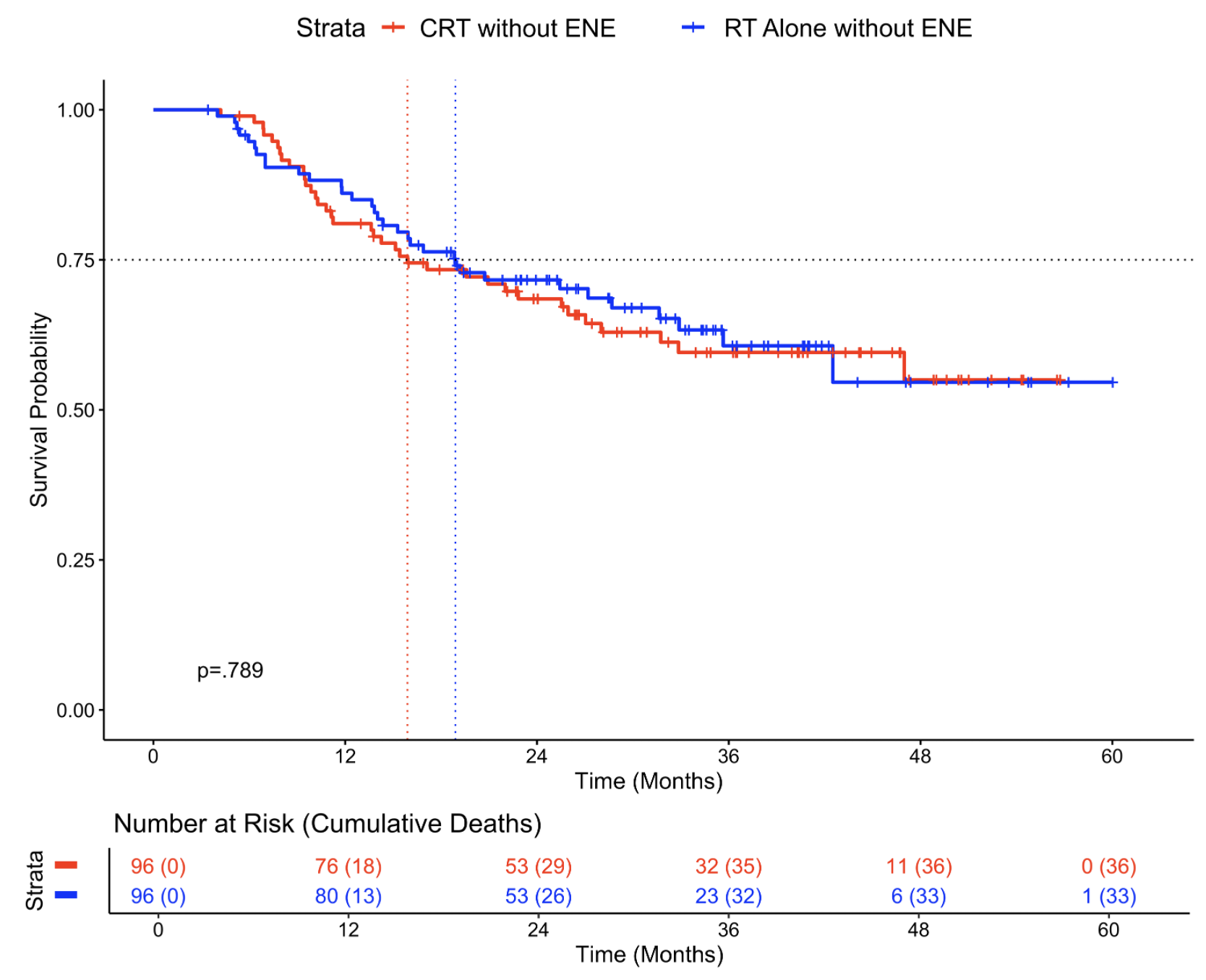
Published:
This poster discussed how neoadjuvant immunotherapy (NI) for oral cavity squamous cell carcinoma (OCSCC) is a promising approach, but its impact on surgical outcomes and survival has not been well studied. From over 31,000 patients, 1% receieved NI. We found that patients receiving NI had similar postoperative outcomes 30-day mortality, unplanned 30-day readmission, hospital length of stay, surgical margin status, and time to adjuvant radiation. However, NI was associated with improved overall survival, as shown by both Kaplan-Meier and Cox proportional hazard analyses. These findings suggest NI may enhance survival without worsening postoperative outcomes for OCSCC patients, pending validation through future clinical trial results. For more details, see slide deck.
Recommended citation: Habib DRS, Shou M, Naranjo C, Adegboye FO, Philips R, Tassone P, Langerman A, Khan A, Topf MC. Outcomes following neoadjuvant immunotherapy for oral cavity cancer: A propensity score matched analysis of the National Cancer Database. Poster presented at: American Head and Neck Society Annual Meeting at COSM; May 15, 2025; New Orleans, LA, USA.
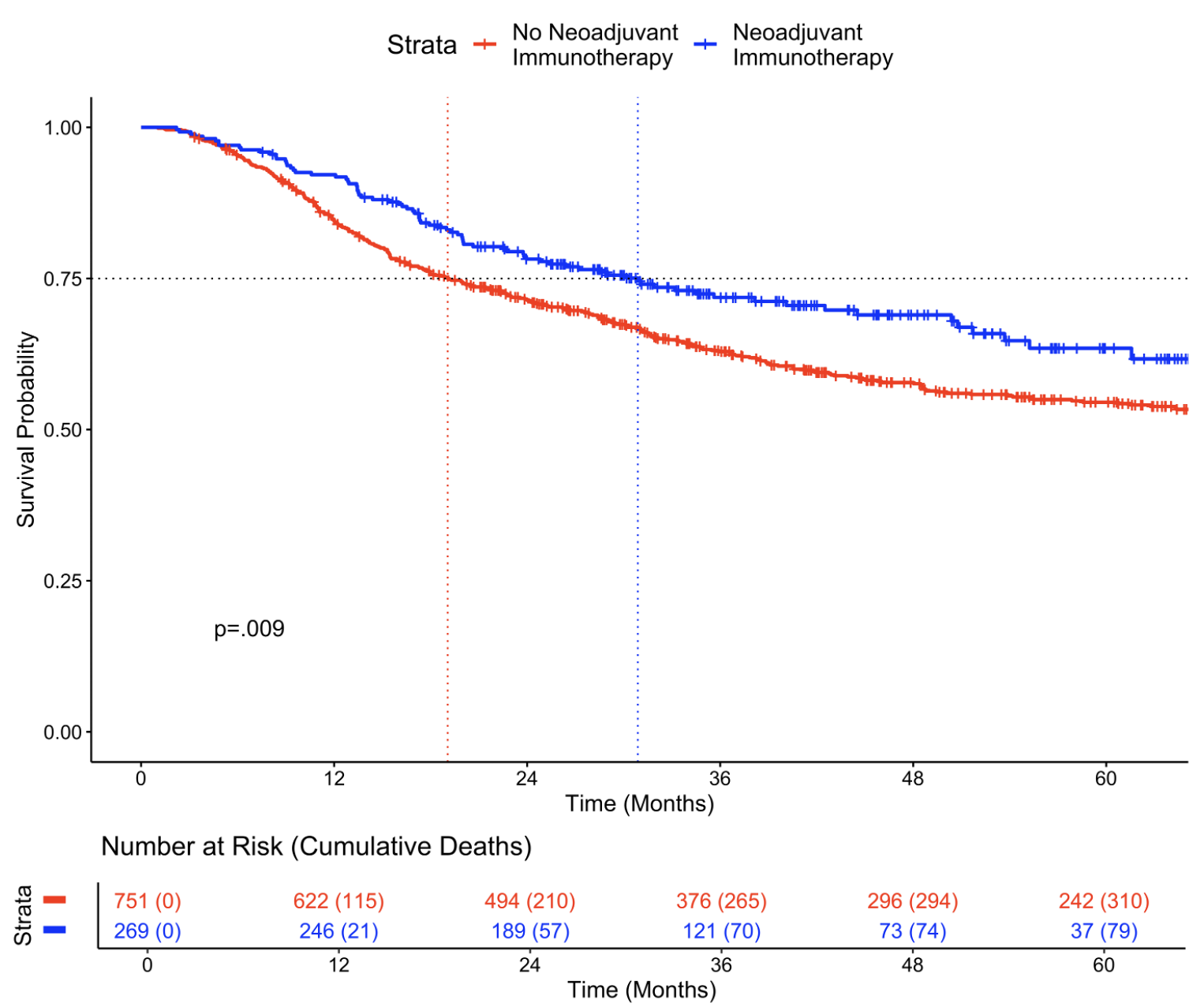
Published:
Lymph node yield (LNY) has been proposed as a quality metric in head and neck cancer care, but its impact on outcomes in total laryngectomy (TL) remains unclear. Analyzing 699 TL patients, this poster found that LNY≥18 was not independently associated with improved overall survival (OS), disease-free survival (DFS), or regional recurrence-free survival (RRFS), even after adjusting for covariates. These findings suggest that LNY may not be a reliable standalone metric for predicting oncologic outcomes in TL patients.
Recommended citation: Jin W, Habib DR, Si CD, Swain BB, Sridhar S, Sinard R, Topf MC. Lymph node yield is not associated with survival in total laryngectomy patients. Poster at: American Head and Neck Society Annual Meeting at COSM; May 15, 2025; New Orleans, LA, USA.
Published:
This oral presentation investigates the patient experience of those with non-flaccid facial paralysis (NFFP) regarding diagnosis, communication, and access to care. An anonymous survey was distributed to gather insights on treatment history, psychosocial impact, and provider interactions, revealing that patients often endure significant delays before receiving specialized care. Findings indicate that nearly half of respondents were previously misinformed about treatment options, leading to higher severity scores in those told there was “nothing else to do.” Despite these challenges, patients demonstrate a strong willingness to seek long-term treatment and are open to paying for therapies that improve their condition.
Recommended citation: Vittetoe K, Barna AJ, Adegboye FO, Habib DRS, Stephan SJ, Patel PN, Yang SF. Patient-reported barriers to diagnosis and treatment in non-flaccid facial paralysis. Oral presentation at: International Facial Nerve Symposium; September 25, 2025; Madrid, Spain.
Published:
This oral presentation examines the psychosocial burden of non-flaccid facial paralysis (NFFP) and patient perceptions of treatment efficacy. A survey conducted among patients revealed that stress exacerbates NFFP symptoms for 62.8% of respondents, with many expressing concerns about their appearance and its impact on social interactions. Despite the significant emotional distress, only 27.3% of patients sought regular mental health support, though treatments like chemodenervation were found to effectively reduce self-consciousness and self-criticism. The findings underscore the profound effects of NFFP on self-image and social well-being, emphasizing the necessity for integrated care approaches that include mental health resources.
Recommended citation: Vittetoe K, Barna AJ, Adegboye FO, Habib DRS, Stephan SJ, Patel PN, Yang SF. The unseen burden of non-flaccid facial paralysis: Patient-reported psychosocial impact and treatment experience. Oral presentation at: International Facial Nerve Symposium; September 25, 2025; Madrid, Spain.
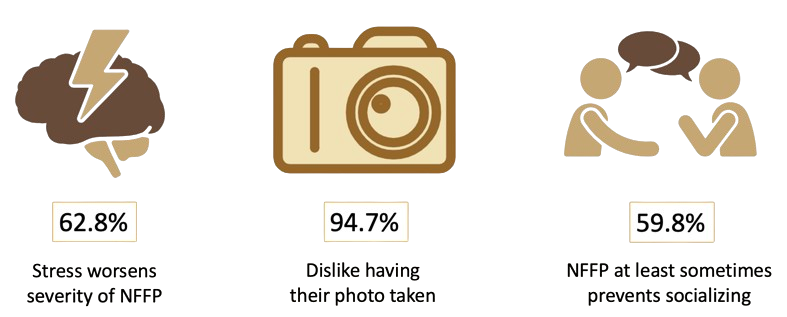
Published:
Digestive cancer risk varies widely among Asian American subpopulations, but these differences are often overlooked in research. Using national mortality data from 2018–2023, this poster found that all Asian subgroups—except Asian Indians—had higher digestive cancer mortality compared to White Americans, with particularly high rates of stomach cancer in Korean Americans. Cultural, dietary, and socioeconomic factors likely contribute to these differences. Our findings highlight the need for more tailored cancer prevention, screening, and education efforts that reflect the diversity within the Asian American community.
Recommended citation: Wang CC, Ali D, Rogers JL, Habib DRS, Shou M, Sun K, Khan A. Mortality from digestive cancers among Asian American subgroups in United States. American College of Surgeons Clinical Congress; October 5, 2025; Chicago, IL, USA.
Published:
Many people who could benefit from hearing aids or cochlear implants do not use them, partly due to high costs and low public awareness. This poster looked at Google search trends from 2004 to 2024 to measure awareness of these devices and found that searches for hearing aids increased over time, while cochlear implant searches stayed low. Some major events such as new device approvals or awareness days briefly boosted search interest, but others had little effect. With cochlear implants costing nearly 45,000 USD compared to 5,000 USD for prescription hearing aids, more effective awareness and government strategies may help improve access to these devices.
Recommended citation: Habib DRS, Bishay AE, Langerman AJ, Tawfik KO. Association between hearing aid and cochlear implant internet searches with media campaigns and federal announcements. Poster presented at: American Academy of Otolaryngology-Head and Neck Surgery Annual Meeting; October 11, 2025; Indianapolis, IN, USA.

Published:
Head and neck cancer patients undergoing free flap surgery often face significant postoperative pain, especially patients with mental health disorders (MHD) or prior narcotic use. In this oral presentation involving 645 patients, sociodemographic variables, MHD, and osteocutaneous radial forearm free flap reconstruction were linked to higher pain scores and increased likelihood of inpatient pain service consultation. These findings highlight the need for tailored, proactive pain management strategies based on individual risk factors.
Recommended citation: Habib DRS, Sridhar S, Suh H, Larson D, Swain BB, Vittetoe K, Sengstack D, Topf MC, Hicks MD. Risk factors for increased postoperative pain in head and neck cancer free flap reconstruction patients. Oral presentation at: American Academy of Otolaryngology-Head and Neck Surgery Annual Meeting; October 11, 2025; Indianapolis, IN, USA.
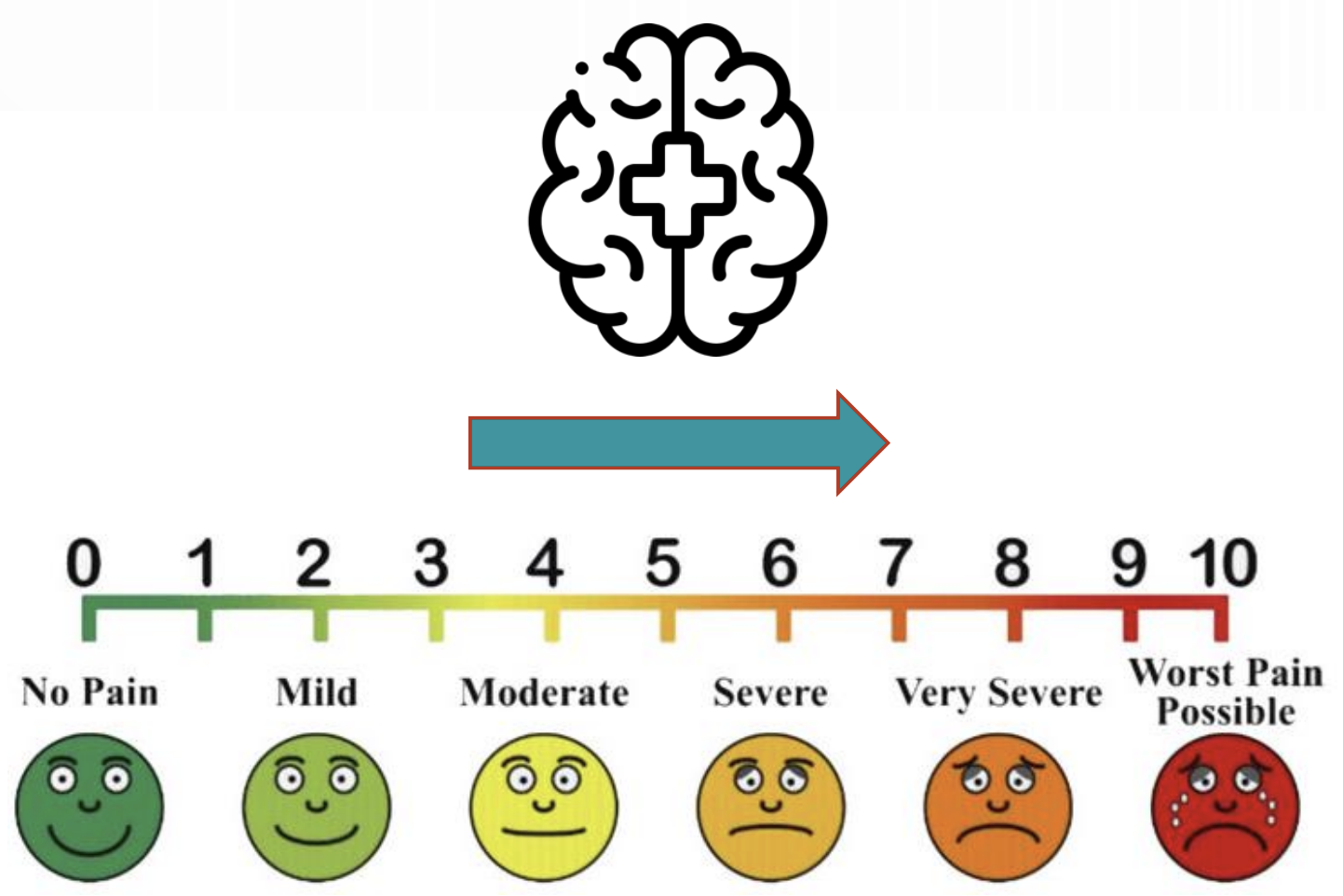
Published:
Although ENT issues account for up to 50% of pediatric and 25% of adult primary care visits, most medical schools do not offer formal ENT education. This poster investigates whether a short online module could improve medical students’ knowledge about sinusitis, a common ENT condition, without significant additional time burden. Among 18 participating students, median test scores rose from 80% before the module to 100% afterward (p<.001), with most students completing the lesson in under 14 minutes. The results suggest that brief, focused ENT education can meaningfully improve student knowledge without adding significant time demands.
Recommended citation: Habib DRS, Naranjo C, Patel PN. Self-paced sinusitis educational module for medical students: Improving otolaryngology knowledge for all future specialties. Poster presented at: American Academy of Otolaryngology-Head and Neck Surgery Annual Meeting; October 11, 2025; Indianapolis, IN, USA.
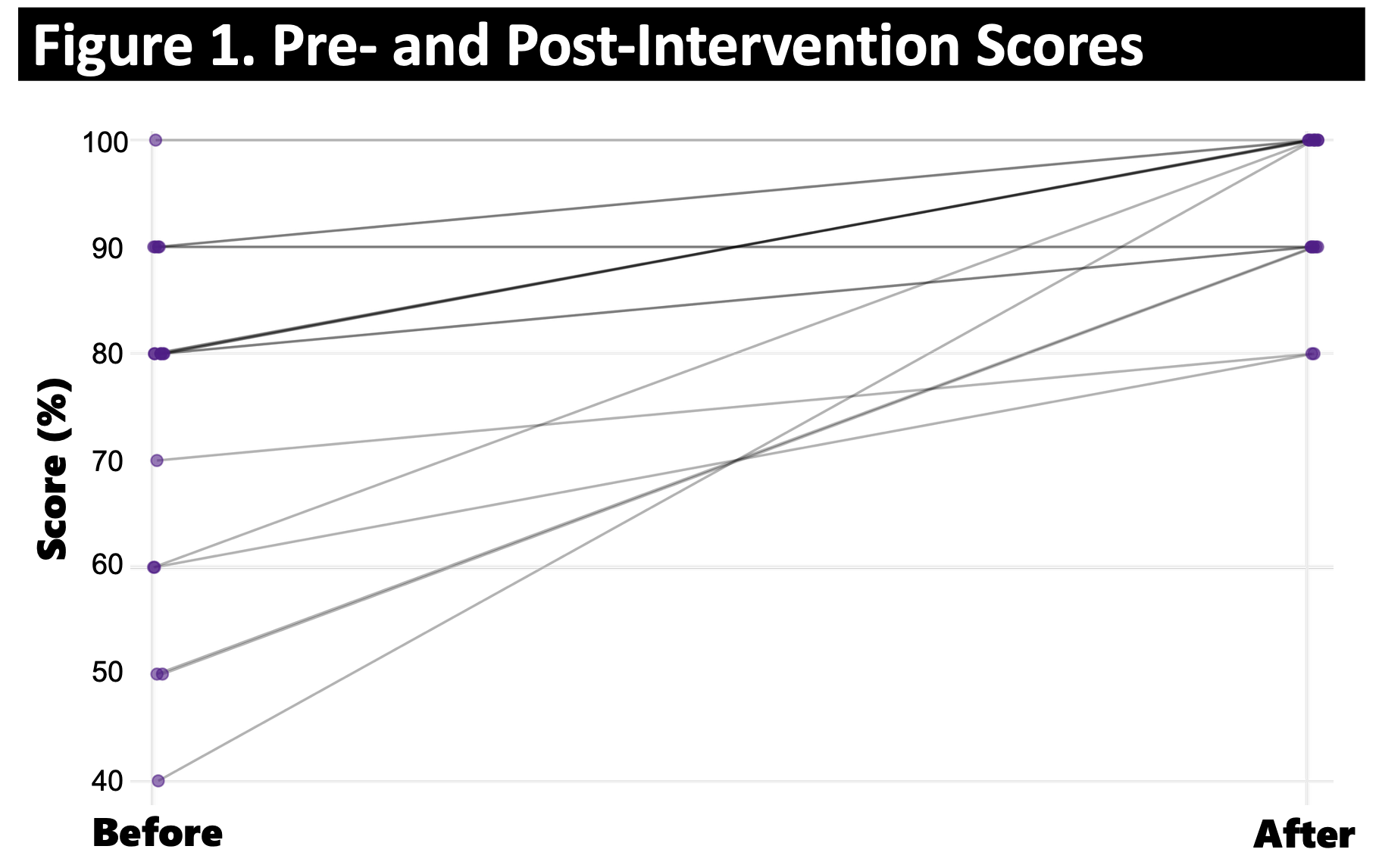
Published:
As cochlear implants (CIs) become more widely used, understanding long-term safety trends is increasingly important. In this oral presentation of over 34,000 patient complications and 33,000 device issues reported to the FDA from 2016 to 2024, we found that overall complication rates stabilized after 2020. However, certain problems—such as skin breakdown, infections, and device positioning issues—continued to rise as a proportion of all reports, along with serious outcomes like hospitalization. These findings suggest that while CI safety has improved overall, specific challenges remain and warrant focused improvements in device design, surgical technique, and post-market monitoring.
Recommended citation: Habib DRS, Bishay AE, Langerman AJ, Tawfik KO. Trends in cochlear implant complications and clinical outcomes from 2016 to 2024. Oral presentation at: American Academy of Otolaryngology-Head and Neck Surgery Annual Meeting; October 11, 2025; Indianapolis, IN, USA.

Published:
Depression is common in patients with head and neck cancer, affecting up to 40%, yet it often goes unrecognized. This oral presentation includes 709 patients who underwent major reconstructive surgery. Only 7.5% had documented preoperative depression, and 5.6% were on antidepressant medications. While depression alone was not linked to worse survival, patients taking SSRI/SNRI antidepressants had longer hospital stays and showed a trend toward lower survival, though not statistically significant. These findings suggest a need for better depression screening and highlight the potential impact of mental health on recovery after cancer surgery.
Recommended citation: Sridhar S, Larson DP, Swain BB, Suh H, Habib DRS, Vittetoe K, Sengstack D, Topf MC, Hicks MD. Association of preoperative depression and clinical outcomes after head and neck free flap reconstruction. Oral presentation at: American Academy of Otolaryngology-Head and Neck Surgery Annual Meeting; October 12, 2025; Indianapolis, IN, USA.
Published:
This oral presentation investigates if preoperative tracheostomy increases the risk of cancer recurrence and worse outcomes for patients undergoing total laryngectomy. In our study of 787 patients treated from 1999 to 2024, 306 (39%) had a tracheostomy before surgery. These patients had significantly worse overall survival, disease-free survival, and local recurrence-free survival, even after adjusting for factors like cancer stage and prior treatments. Tracheostomy was also associated with a trend toward more peristomal recurrences, particularly when the time between tracheostomy and surgery was longer.
Recommended citation: Jin W, Habib DRS, Si CD, Swain BB, Hicks M, Langerman A, Mannion Kyle, Rohde S, Sinard R, Topf MC. Preoperative tracheostomy is associated with recurrence in total laryngectomy patients. Oral presentation at: American Academy of Otolaryngology-Head and Neck Surgery Annual Meeting; October 14, 2025; Indianapolis, IN, USA.
